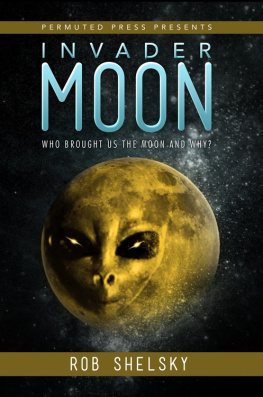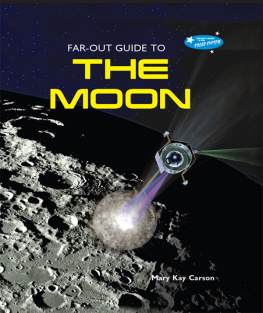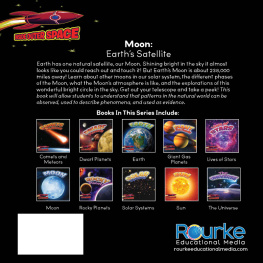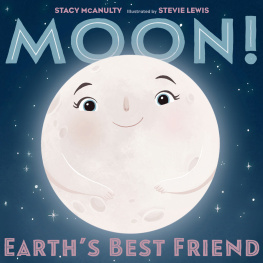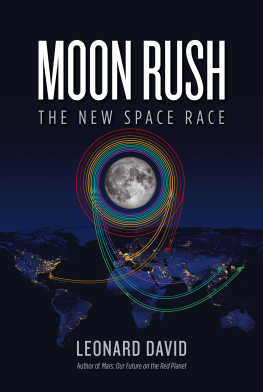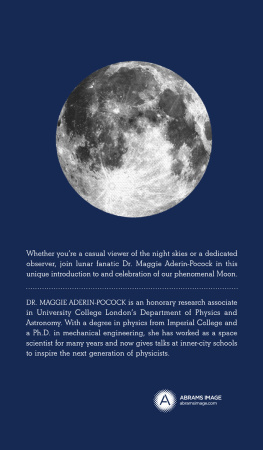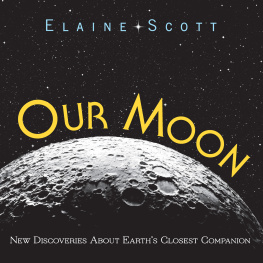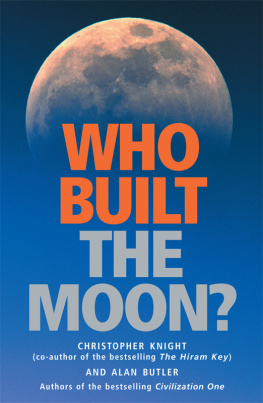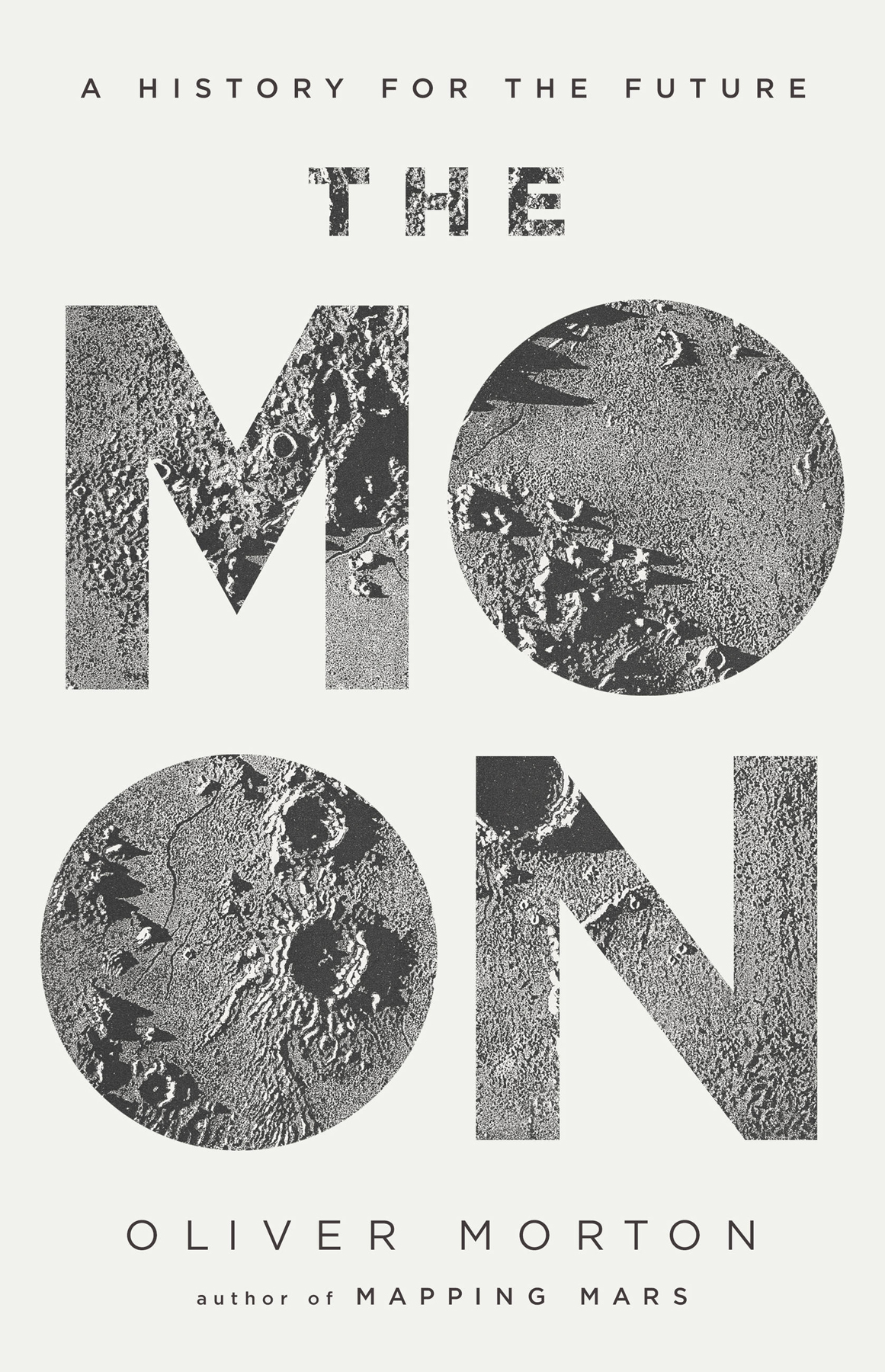Copyright Abq72Ltd.
Cover design by Pete Garceau
Cover image copyright iStock/GettyImages
Cover copyright 2019 Hachette Book Group, Inc.
Endpapers from The Moon by James Nasmyth and James Carpenter (1871).
Left: The crater Copernicus; Right: The lunar Apennines, with the crater Archimedes
Hachette Book Group supports the right to free expression and the value of copyright. The purpose of copyright is to encourage writers and artists to produce the creative works that enrich our culture.
The scanning, uploading, and distribution of this book without permission is a theft of the authors intellectual property. If you would like permission to use material from the book (other than for review purposes), please contact permissions@hbgusa.com. Thank you for your support of the authors rights.
PublicAffairs
Hachette Book Group
1290 Avenue of the Americas, New York, NY 10104
www.publicaffairsbooks.com
@Public_Affairs
The Economist in Association with Profile Books Ltd. and PublicAffairs
Originally published in 2019 by Profile Books Ltd. in Great Britain.
First US Edition: June 2019
Published by PublicAffairs, an imprint of Perseus Books, LLC, a subsidiary of Hachette Book Group, Inc. The PublicAffairs name and logo is a trademark of the Hachette Book Group.
The greatest care has been taken in compiling this book. However, no responsibility can be accepted by the publishers or compilers for the accuracy of the information presented. Where opinion is expressed it is that of the author and does not necessarily coincide with the editorial views of The Economist Newspaper.
While every effort has been made to contact copyright-holders of material produced or cited in this book, in the case of those it has not been possible to contact successfully, the author and publishers will be glad to make amendments in further editions.
The publisher is not responsible for websites (or their content) that are not owned by the publisher.
The Library of Congress has cataloged the hardcover edition as follows:
Names: Morton, Oliver, author.
Title: The moon : a history for the future / Oliver Morton.
Description: New York : Public Affairs, [2019] | Includes bibliographical references and index.
Identifiers: LCCN 2019004627 (print) | LCCN 2019005523 (ebook) | ISBN 9781541768062 (ebook) | ISBN 9781541774322 (hardcover)
Subjects: LCSH: MoonPopular works.
Classification: LCC QB581.9 (ebook) | LCC QB581.9 .M67 2019 (print) | DDC 523.3dc23
LC record available at https://lccn.loc.gov/2019004627
ISBNs: 978-1-5417-7432-2 (hardcover), 978-1-5417-6806-2 (ebook)
E3-20190502-JV-NF-ORI
The Moon is such a fascinating object in human history. From its dominance in our neighboring sphere, to its romantic impetus, to its symbol of national stature, to its position as a mere stepping stone to greater exploits, the Moon has been omnipresent in the human sky. And no book about the Moon that Ive ever read captures the multifaceted nature of the Moon as does Oliver Mortons The Moon. As impressive as the subject matter he deals with is the quality of Oliver Mortons writing. Whether describing the clockwork of the lunar cycle or the history of the Moons influence in human affairs, Mortons writing is clear, incredibly informative, and flows like poetry. A truly delightful and informative read.
R USTY S CHWEICKART , lunar module pilot, Apollo IX
A multidisciplinary triumph, combining a deep understanding of science fiction and myth with accurate, up-to-date lunar science and space technology.
D AVID M ORRISON , founding director, NASA Lunar Science Institute
Beautifully written: evocative, witty, and truly informative. I thought I knew a lot about the Moon but I nonetheless learned all sorts of fascinating new things, and thoroughly enjoyed myself doing so. Combining science and science fiction is not easy and Oliver Morton manages it seamlessly and brilliantly! Superb.
A DAM R OBERTS , author of The Palgrave History of Science Fiction and The Thing Itself
A hymn to the Moon. I cant think of a wiser, more eloquent or better-informed companion for a journey around our natural satellite than Oliver Morton, whose poetic prose displays a breadth of knowledge not often found in science writing.
Roger Highfield, director of external affairs, the Science Museum Group
Our Moon, a spherical bit of unchanging inanimate rock, nonetheless captivates us with its romance and its beauty. Its tantalizing almost deceptive proximity makes it also a destination, both a past one and a promising one for the future. In this poetically written and informative book, Oliver Morton takes us through all aspects of this very familiar but very foreign territory, which has inspired stories and study for decades. What a remarkable achievement and one well worth exploring.
L ISA R ANDALL , Frank B. Baird Professor of Science, Harvard University
To John Loft, my uncle, John Hynes, my father-in-law, and John Morton, my brother beloved all
Her antiquity in preceding and surviving succeeding tellurian generations: her nocturnal predominance: her satellitic dependence: her luminary reflection: her constancy under all her phases, rising and setting by her appointed times, waxing and waning: the forced invariability of her aspect: her indeterminate response to inaffirmative interrogation: her potency over effluent and refluent waters: her power to enamour, to mortify, to invest with beauty, to render insane, to incite to and aid delinquency: the tranquil inscrutability of her visage: the terribility of her isolated dominant resplendent propinquity: her omens of tempest and of calm: the stimulation of her light, her motion and her presence: the admonition of her craters, her arid seas, her silence: her splendour, when visible: her attraction, when invisible.
J AMES J OYCE , Ulysses
How many more times will you remember a certain afternoon of your childhood, some afternoon thats so deeply a part of your being that you cant even conceive of your life without it? Perhaps four or five times more. Perhaps not even. How many more times will you watch the full moon rise? Perhaps twenty. And yet it all seems limitless.
P AUL B OWLES , The Sheltering Sky
Are we going to lunch? Or are we going to the Moon?
R IP VAN R ONKEL , R OBERT A. H EINLEIN AND J AMES OH ANLON , Destination Moon
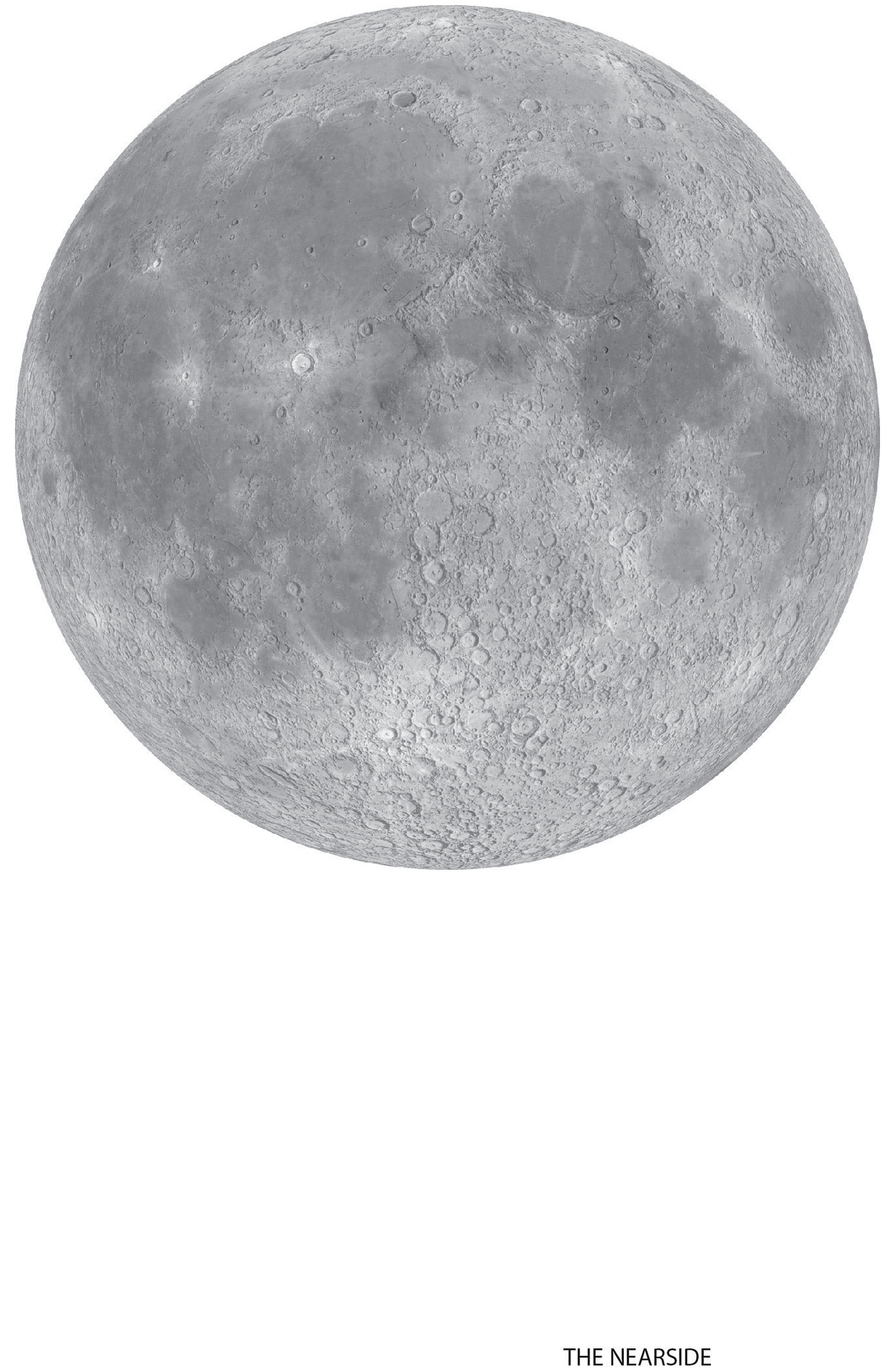
STRAWBERRY MOON
June 19th 2016, San Mateo County, California
T HE C ALIFORNIA SKY WAS WARM AND BLUE, ITS LIGHT STILL bright but softening. Shadows lengthened across dry grass towards San Francisco Bay as the train trundled south. In London, though, it was four in the morning, and it was in London that I had started my day. I was a third of a planet from home and I was tired.
I had come to Silicon Valley to talk to people about space and technology. In preparation, my head resting against the window of the carriage, I was reading a scientific paper on places where one might site a moonbase. I was not taking in the arguments all that well, but I was impressed by their breadth. The papers Moon was mapped by laser, camera and radar, the shadows in its craters and sunlight on its peaks modelled by computers, its minerals assayed using electromagnetic radiation of every frequencyand neutrons, to boot. The data were as varied in source as in type; some came from Chandrayaan-1, Indias first lunar mission, launched in 2008; some from NASAs Lunar Reconnaissance Orbiter, which was launched the following year and had, six years later, sent its handlers a startling 630 terabytes of data. Some were older: from the Soviet Unions Lunokhod rovers, from Americas Apollo landings, from the Lunar Orbiter missions that had paved the way for them.



